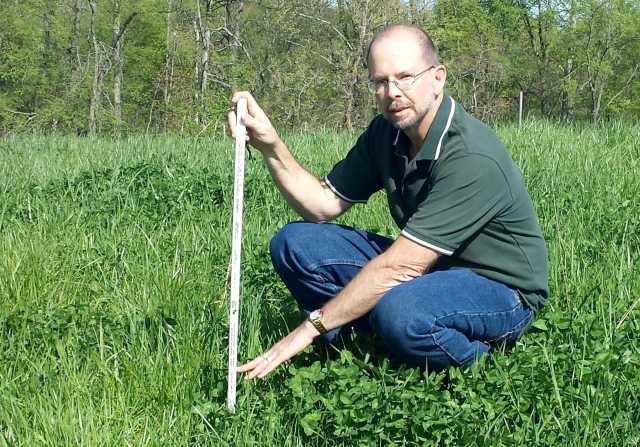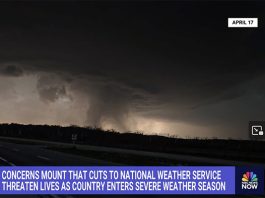

Victor Shelton is the NRCS Grazing Specialist and Agronomist for the state of Indiana. He has been writing “Grazing Bites” since 2008 and this article is the 150th he’s written. We’re honored that he shares these with the On Pasture community.
Victor says, “Almost every issue has initiated an email or phone call from someone, occasionally a whole bunch. I appreciate those responses because it lets me know that my effort and time were not completely in vain and it ignited a thought or change that hopefully benefited readers. I’ve gotten some constructive criticism over the years, but mainly because they thought I was being a bit too biased on grass-based systems, which is probably true. I have also enjoyed some very interesting questions along the way. I’ve had to stop and scratch my head wondering about a question coming from not only faraway states, but also a few from outside the country. I try and provide good sound advice, based on personal experiences, in a way that anyone can understand and utilize it, and I hope that everyone finds a bit of useful information in it, at least occasionally.”
Victor’s efforts to help producers think about what they should be looking at and preparing for throughout the year have certainly been beneficial to us all. Today, he answers graziers’ most commonly asked questions. Enjoy!
“I read on the internet that….”
 Okay, stop right there. Just because you read it on the internet doesn’t mean that it’s valid. I truly believe that we need to look at most things in a site-specific way. Rainfall, growing season, winter temperatures (hardiness zones) and even elevation must be considered. Just because someone says that something will work where they are at doesn’t mean it will work here. Even soils that are mapped the same side by side can be very different depending on the history of the site.
Okay, stop right there. Just because you read it on the internet doesn’t mean that it’s valid. I truly believe that we need to look at most things in a site-specific way. Rainfall, growing season, winter temperatures (hardiness zones) and even elevation must be considered. Just because someone says that something will work where they are at doesn’t mean it will work here. Even soils that are mapped the same side by side can be very different depending on the history of the site.
If you look for the principles at work, you’ll have better success adapting practices to your own place.
“Can I broadcast or inter-seed grass seed to improve the stand?”
That depends. In most cases, seeding grasses into existing stands of perennial grasses is usually not a successful endeavor because the existing forage provides too much competition for the new seedlings. There are a few exceptions. Drilling something like orchardgrass into a failing alfalfa field is almost always successful if soil conditions are good, especially in late summer. Annual ryegrass can often be seeded into thin pastures during late winter and do quite well while providing some extra forage and ground cover. Oftentimes timothy can be successful being seeded during the winter dormant period, especially into thin pastures due to it being a small slick seed with a lot of cold tolerance. Sadly, in most cases, the effort is in vain and you would have been better off completely starting over with the stand. But always start with a soil test and fertility; you might be surprised what is lying dormant in the seed bank.
“What can I plant that the livestock won’t eat into the ground?”
You may laugh, but I’ve been asked this question several times. I would like to respond, “have your considered green outdoor carpeting?”
This question usually comes from cases of severe overgrazing. If more soil is showing than grass, there is certainly a problem. That problem is most likely due to either not enough pasture for the number of livestock, long term continuous grazing with too many livestock, or the pasture being treated more like a dry lot than a pasture.
Forages require rest. They also can only provide so much which is why we seriously need to constantly evaluate our animal-to-forage balance and understand that what the pasture doesn’t provide, we will have to carry to them one way or another.
Read more on the importance of rest:
“How may cows per acre can I graze?”
If you are talking about stock density, then you are talking about pounds of animal live weight per grazing event for an acre allotment. That number can be very high, I’ve seen it over 500,000 pounds per acre, but that was also for only a twelve-hour time frame and should have been a bit shorter than that. If what you really want to know is how many acres do you need to support one cow for the grazing season or the year (hay included from), then on average, you need about 2.5 acres per animal unit. An animal unit is 1,000 pounds live weight, so a 1,200-pound cow is 1.2 animal units and will need about three acres on average to meet her dry matter needs.
Victor adds more on this topic here:
“What is the number one pasture management practice?”
The answer to this question somewhat depends on where you are coming from; is it purely about pasture management or is it more of a fertility question?
As far as I’m concerned, management-wise one of the best things that you can do is to be very diligent about maintaining stop grazing heights. Like I’ve said before, stop grazing heights are the shortest vegetation present, not the tallest, so the average height is probably more! By maintaining this residual growth, you maintain good soil cover, keeping the soil cooler and reducing runoff and evaporation. It also supports good rest and recovery and thus regrowth, yield, and animal intake. It is also beneficial for root growth, maintaining and improving soil organic matter, nutrient recycling, and overall soil health.
With increasing dry conditions in the region right now, maintaining green residual and cover is even more important. If the question is really about fertility. I still believe in starting with a soil test for baseline information with pH being the first thing to look. If the pH is off too much, nutrients will often be deficient or misinterpreted. Adjust the pH to shoot towards neutral. Give it time to adjust and then resample for nutrients.
“Why are my pastures so weedy?”
I’ve heard several versions of this question. Without seeing the site and management, it is a hard question to answer. Minimizing soil disturbance and maintaining good soil cover is always a good place to start to prevent or keep weeds in check. When there is good vegetative cover and the soil surface is protected, there is less opportunity for weed seeds to germinate and get started. It happens to everyone; if you leave the cows in a spot too long, especially combined with a heavy rain event, you open up the sod for opportunistic weeds. The threshold of how many weeds are too many weeds is certainly different from person to person. My threshold is hit quickly at 30% canopy. When weeds start occupying 30% of the canopy, intervention is needed because it is robbing sunlight from desirable forages. Weeds that are noxious or very invasive should also be kept from going to seed.
Thanks and a Request
 I want to take a moment and thank my wife for putting up with me while I write these articles. She may have thought I should be doing something else during those times, yet she has been very supportive in my effort to educate about pasture management. I’d like to thank Rebecca Fletcher, Jerry Perkins, Don Ryan, and Kris Vance for being my sounding board, editing my southern Indiana grammar, dealing with sometimes very short turn arounds, and helping me stay focused on the topic.
I want to take a moment and thank my wife for putting up with me while I write these articles. She may have thought I should be doing something else during those times, yet she has been very supportive in my effort to educate about pasture management. I’d like to thank Rebecca Fletcher, Jerry Perkins, Don Ryan, and Kris Vance for being my sounding board, editing my southern Indiana grammar, dealing with sometimes very short turn arounds, and helping me stay focused on the topic.
Lastly, I believe I’ve only done this once before, but I’m going to ask that if you have found any of these articles beneficial, interesting, or just entertaining, send me a quick short email at victor.shelton@usda.gov to give me some incentive to continue.
Remember, it’s not about maximizing a grazing event, but maximizing a grazing season! Keep on grazing!
More pasture information and past issues of Grazing Bites are available here.



